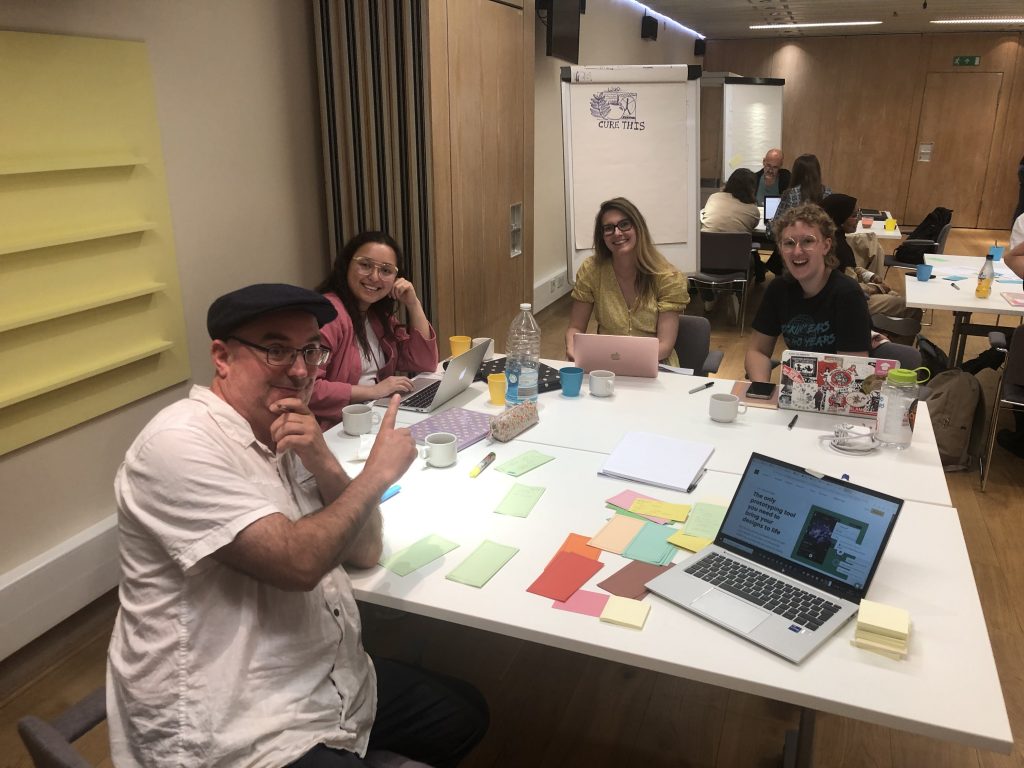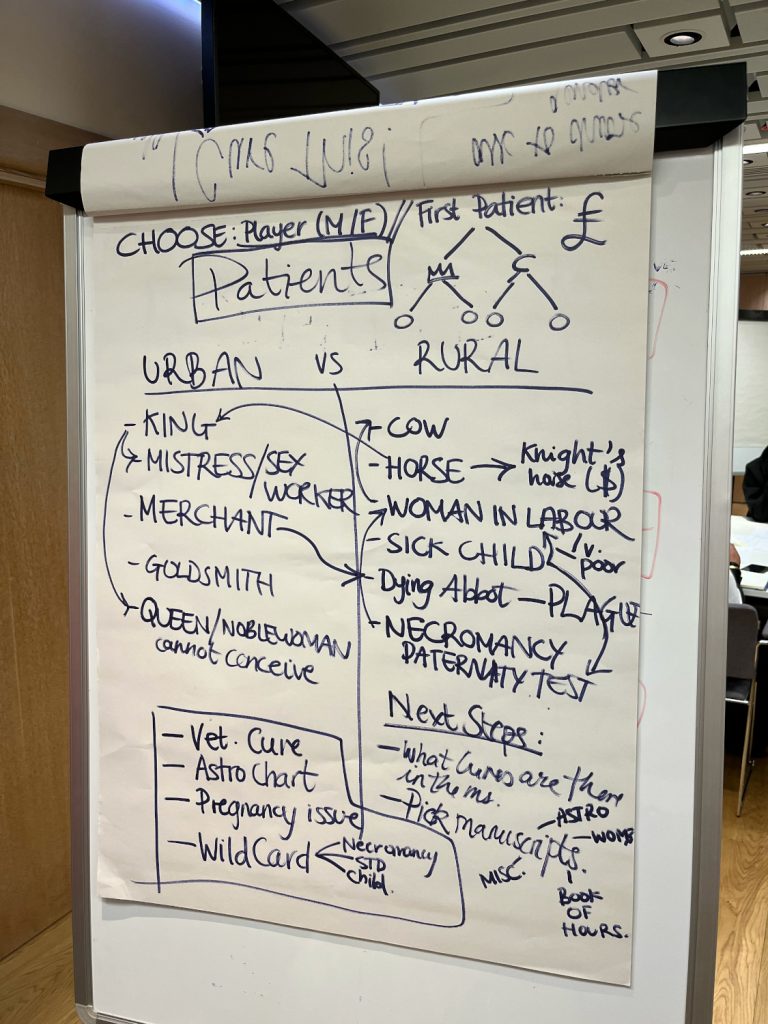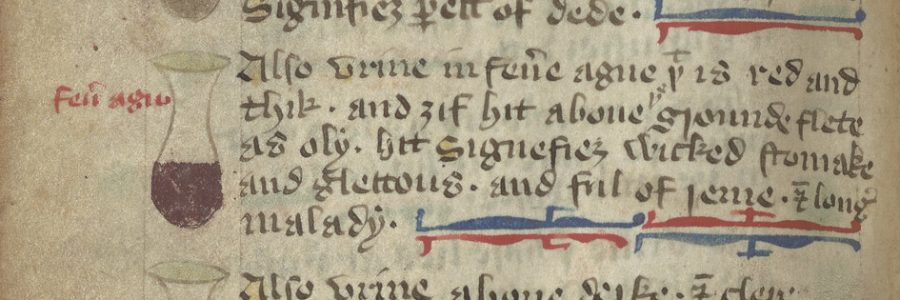
Cure This! Medieval maladies and the 2023 Hands:On Hackathon
This guest post is by Kate Falardeau, PhD candidate in the Faculty of History, and one of the participants of this year’s Hands:On Hackathon at Cambridge University Library. This was the fourth such event organised in collaboration with the School of History at Queen Mary University of London. The theme this year was medieval medicine, and was devised in conjunction with the Wellcome-funded Curious Cures in Cambridge Libraries project at the UL. The organisers gratefully acknowledge the financial support of the Wellcome Trust, the School of History at QMUL, the Faculties of English and History at Cambridge, and the Association for Manuscripts and Archives in Research Collections (AMARC).
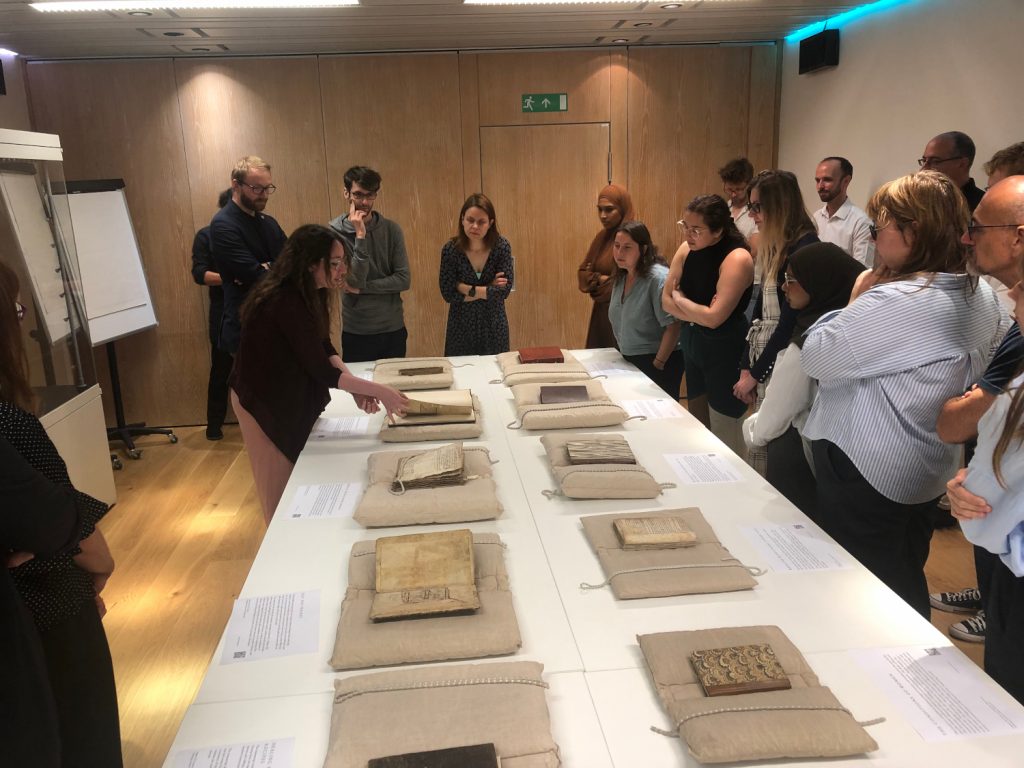
At the beginning of the week, few of us knew each other. Some were experienced in coding and app design, and some were not. Some had analysed many medieval manuscripts, and some had never seen one in person. On that first day, manuscripts from the Curious Cures project were laid out on two large tables pushed together in the middle of the room. Each opening revealed things fascinating and strange to modern eyes: a man with Zodiac symbols overlaid on his body, jars of urine of different colours (stained with a mysterious substance), and calendar pages with the labours of each month. We circulated around the table, taking notes and listening to the project cataloguers. We thought not only of the medieval Europeans who had composed, copied, and used these remedies, but also of the challenge that we had been set: to design an app that would enable visitors to an exhibition on medieval medicine to engage with and understand the manuscripts on display.
This year’s Hands:On Hackathon brought together medieval manuscript experts, web developers, and students from Queen Mary University of London, the University of Cambridge, Charles University in Prague, the Hebrew University in Jerusalem, and Radboud University in Nijmegen. On the second day, people took turns pitching their initial ideas to the group as a whole – and then a mix-and-mingle / speed-dating exercise saw four teams coalesce around the most popular proposals. The teams were: Appa Mundi, Putrid Pals, Operation Monk and my team, Cure This!
We were given a selection of user personas to choose from, imaginary characters with particular interests and needs that our apps would need to address: Carmela the Retired Midwife, who was interested in places and people but not confident in using a smartphone; Olivia the Cool Kid, who likes video games and weird stories but has dyslexia and finds history at school a bit boring; and Julian the Keen Gardener, who likes beautiful visual imagery but doesn’t have an academic background and doesn’t like to feel patronised.
Our team chose Carmela and our app was a choose-your-own-adventure narrative. Within a couple of days, we transformed our initial ideas from rough sketches and post-it notes into a prototype app mocked up on the design platform Figma. At the start, the user assumes the identity of a medieval medical practitioner: whether the real-life Thomas Deynman, physician to Henry VII and his mother, Lady Margaret Beaufort – or the character Margery Trotula, inspired by the 12th-century gynaecologist and writer, Trota of Salerno. The user must then treat patients – including a knight’s horse, a courtesan and even the king himself – choosing between recipes found in the Curious Cures project manuscripts and learning what works and what doesn’t! On Thursday, we welcomed some external testers to the Hackathon, who tried out our apps for the very first time and gave us some valuable feedback and pointers for improvement – which we rapidly incorporated into our designs before the final presentations on Friday.
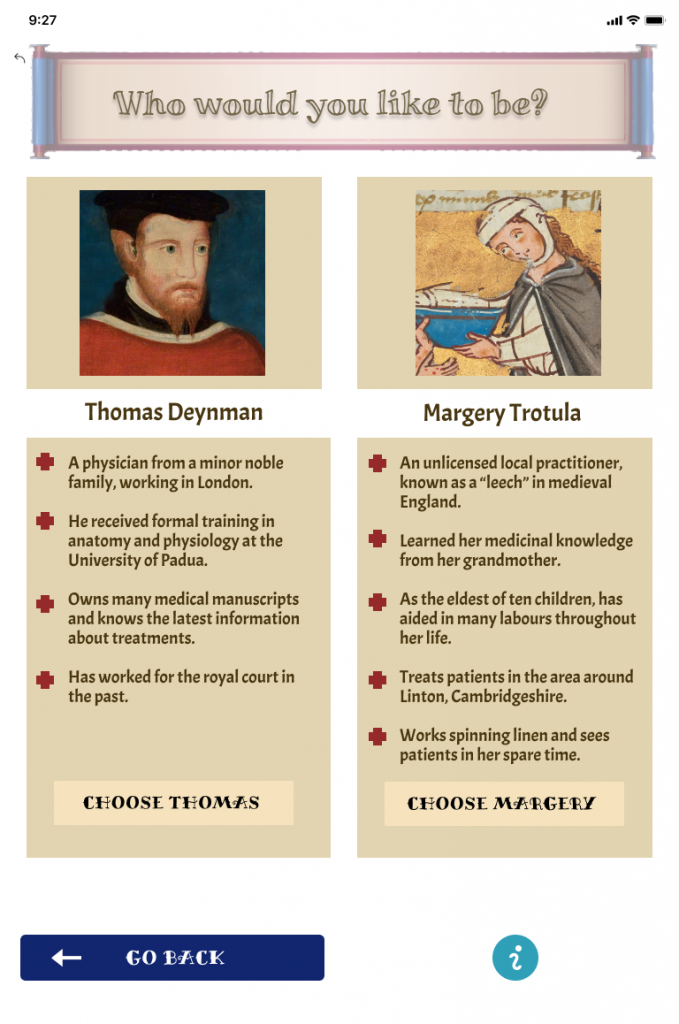
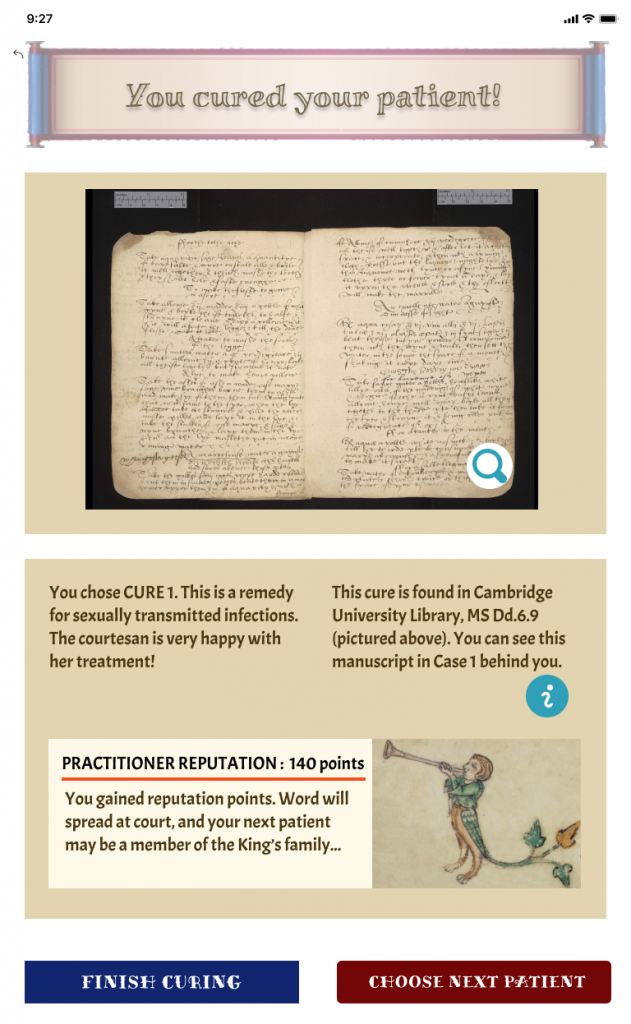
As someone with no previous experience with app design, I found the Hackathon a great opportunity to learn new ways of thinking. The collaborative aspect of the experience was like nothing else I have experienced in my postgraduate studies. The entire process, from start to finish, was wholly shared with my team. There was no delegation; every decision we made was made together. I am proud of how our app highlighted the human stories revealed by the manuscripts in the Curious Cures project but also made these accessible to potential exhibition visitors. The Hands:On Hackathon exemplified to me that the methods of digital humanities allow us to bring the past to those in the present, and not just for an academic audience. Cure This! ended up being an educational resource for us, as well as for the persona for whom we designed the app.

